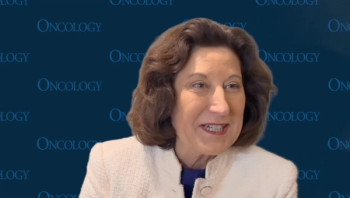
- ONCOLOGY Vol 11 No 4
- Volume 11
- Issue 4
Book Review: Physicians' Guide to the Internet
Those of us who have been involved in medicine for a number of years can remember a time when physicians were the ones who informed their patients about the latest advances in diagnosis and treatment. In the new electronic age, however, medic
Those of us who have been involved in medicine for a number of yearscan remember a time when physicians were the ones who informed their patientsabout the latest advances in diagnosis and treatment. In the new electronicage, however, medical information is available to anyone and everyone almostfrom the moment of its conception. Medical journals and textbooks now takea back seat to television and computers in terms of prompt delivery ofknowledge. In fact, many of the current journals are now "on line,"available to anyone with a computer and a phone line.
One of the most important advances in information transfer is the Internet,which can provide instant access to almost any type of information desired,from almost any source in the world. In order to help the physician takeadvantage of this body of knowledge, the Physicians' Guide to the Internetattempts to lead the professional on his or her journey down the informationsuperhighway.
The first 22 pages of this 212-page paperback are devoted to an introductionto the Internet. There is a brief chapter on hardware requirements andthe various methods one can use to connect to on-line services that offerInternet access. This is followed by a description of Internet connectionsand discussions of such entities as e-mail, FTP, news groups, and the WorldWide Web.
The rest of the book is basically a catalogue of medically related Internetsites, arranged alphabetically by subject. The section on Oncology, forexample, has only one entry, the Web site for Oncolink, a cancer informationservice sponsored by the University of Pennsylvania. A look under Cardiology(my own subspecialty) reveals two sites, the Cardiac Prevention ResearchCenter mail list and the Web site for a course created by Vanderbilt University.Other sections are devoted to allied health personnel, grants, career information,and a list of on-line medical libraries.
Unfortunately, the Physicians Guide to the Internet suffers fromthe same shortcomings as most print media about this topic-- namely, bythe time they are published, they already are outdated. There are now literallyhundreds of sites on the World Wide Web devoted to general as well as specialtymedicine, none of which is listed in this book. The Web is currently theInternet service du jour, and it is simply teeming with medical information.Very few listings in this guide are of relevance to specialists, and manymore comprehensive sources of information are now available on the "net."
In addition, the chapters on access also show signs of age. Today, computerscan be purchased complete with point-and-click Internet Web browsers, andfrequently come with offers for services that can connect one to the Web.Even standard services, such as Compuserve and America Online, offer Internetcapability.
The Physicians' Guide to the Internet is a noble effort but hassince been eclipsed by the explosion occurring in computer-based informationaccess. Beginners new to computers and the Internet, who are interestedin more information, will need a book with a much more comprehensive reviewof the material. Those familiar with "surfing the net" will findthe contents of this guide fairly superficial and incomplete. If physiciansare interested
in ways in which the Internet can enhance both their academic and clinicalpractice, I would strongly recommend that they attend one of the many mini-coursesthat are held at most of the major medical meetings throughout the country.
Articles in this issue
over 28 years ago
Study of Protein Blocking Normal Cell Death May Improve Cancer Drugsover 28 years ago
An Overview of Adenocarcinoma of the Small Intestineover 28 years ago
Roswell Park to Administer "Old" Drug in a New Wayover 28 years ago
NY Lt. Governor Calls for a Halt to HMO AbusesNewsletter
Stay up to date on recent advances in the multidisciplinary approach to cancer.

















































































